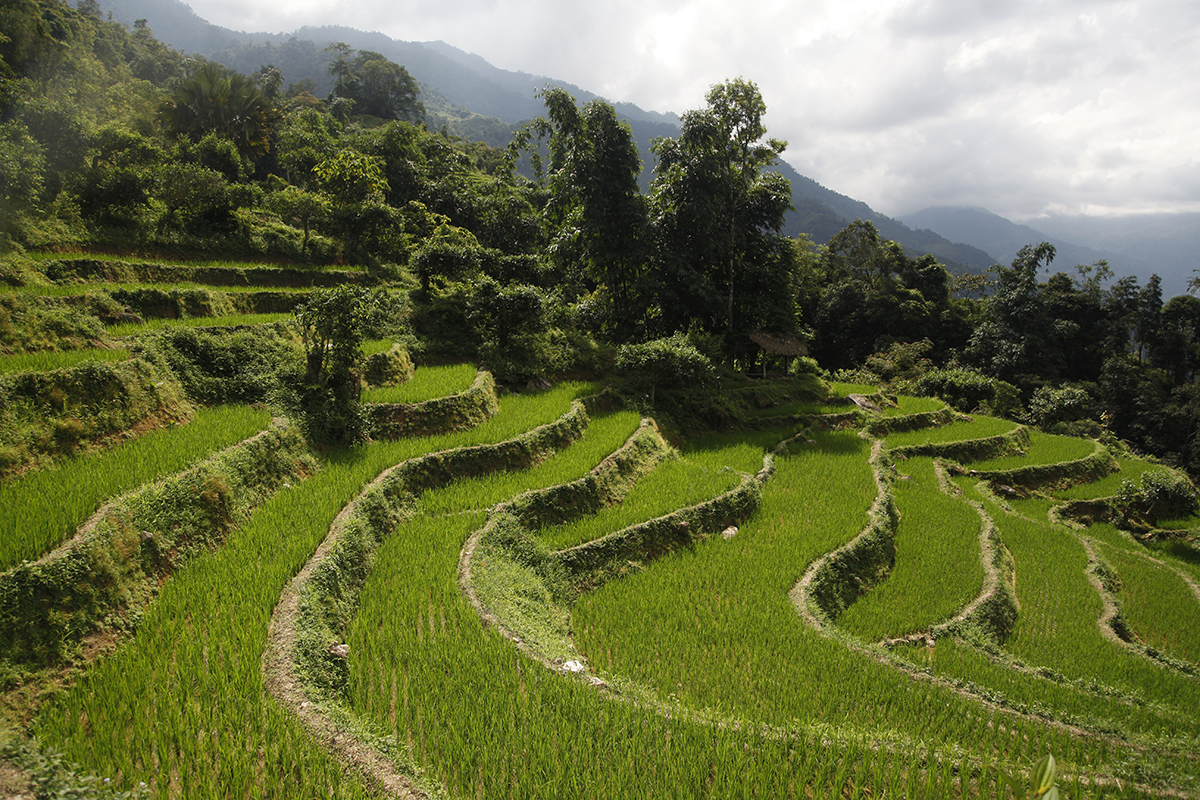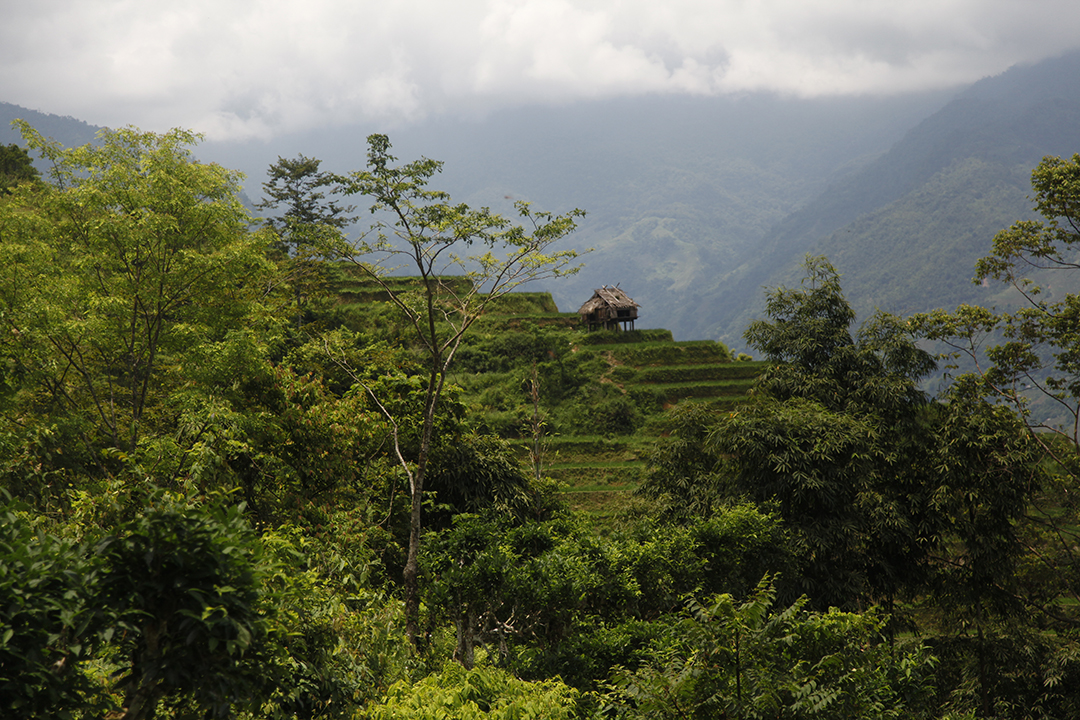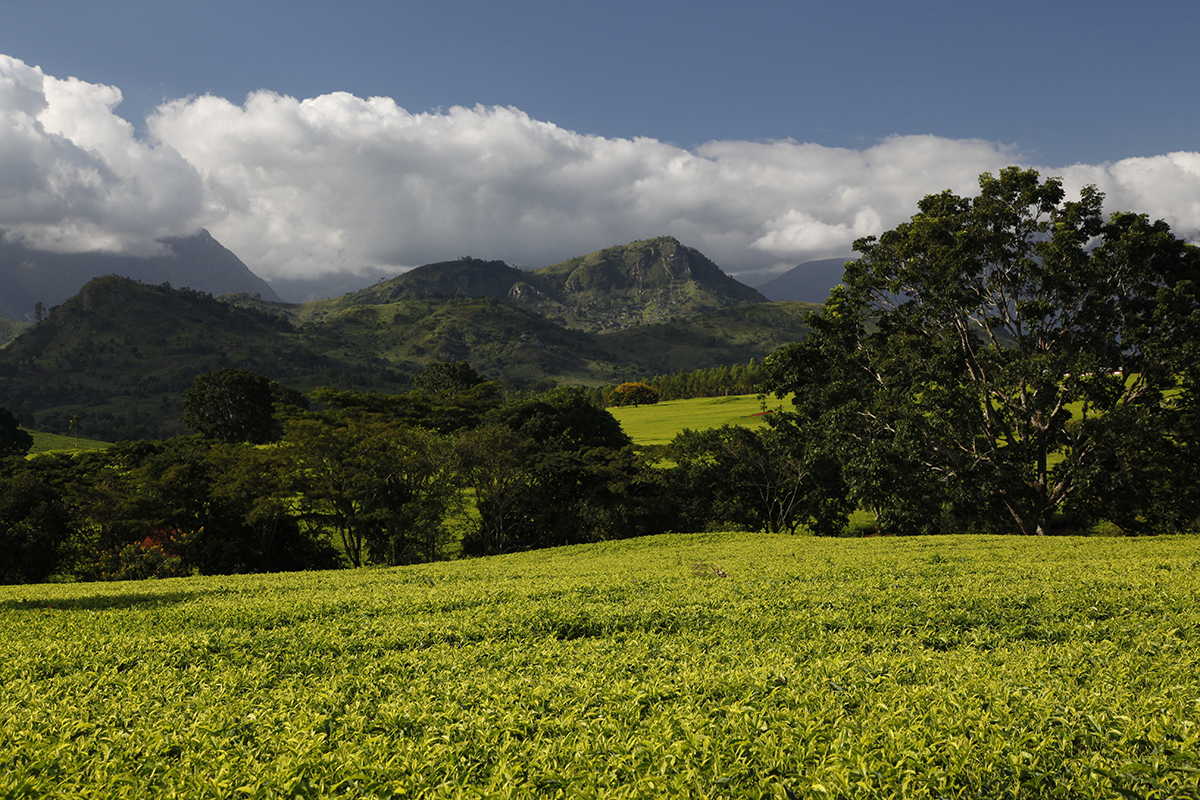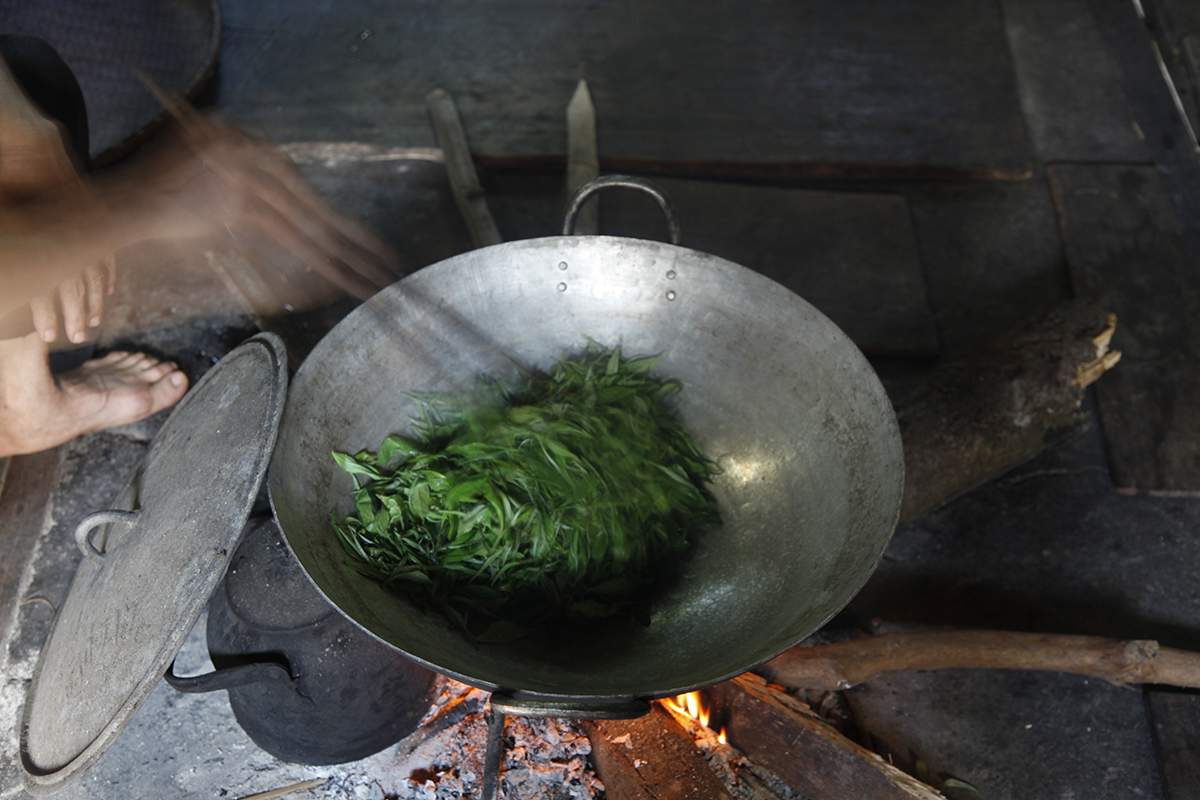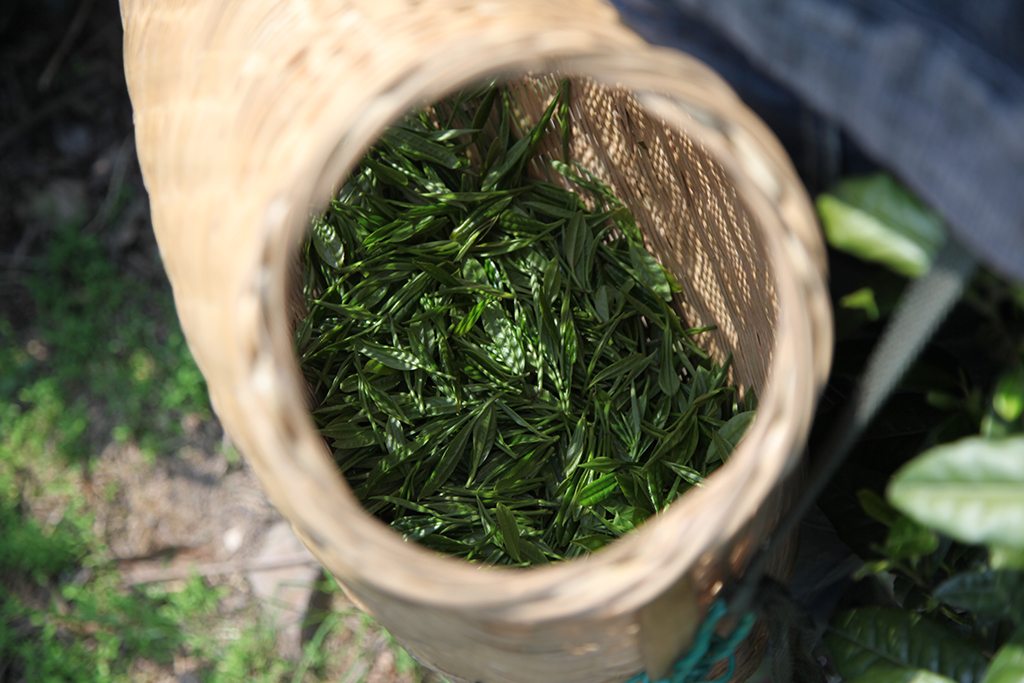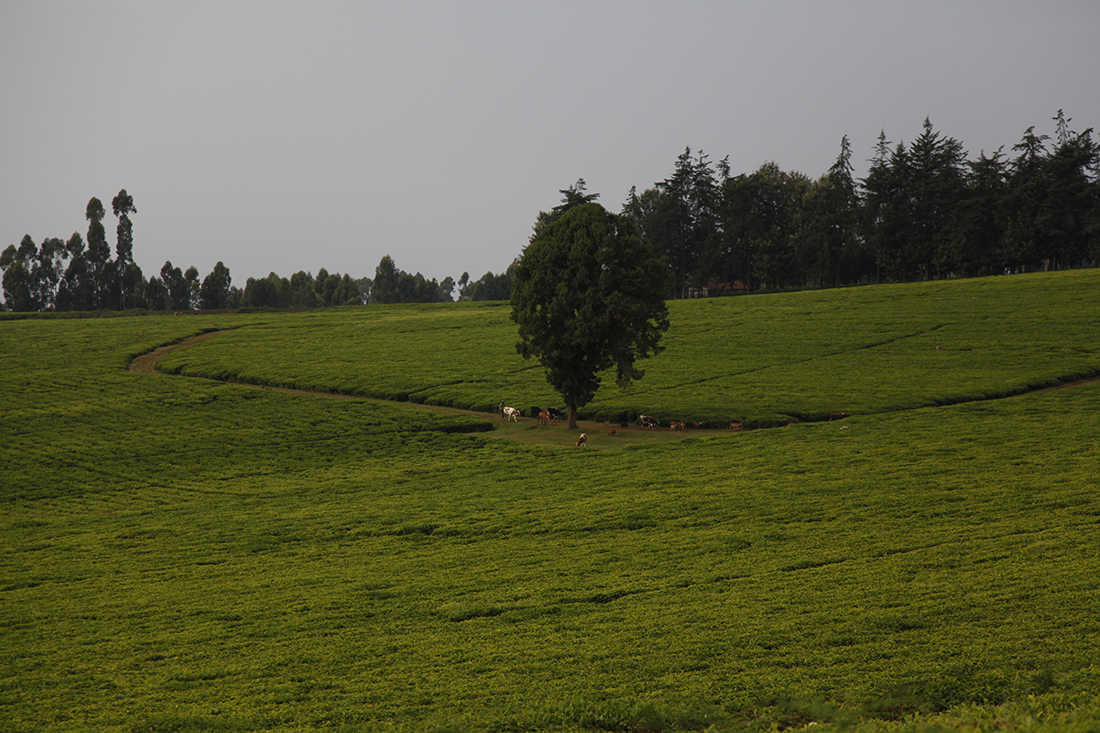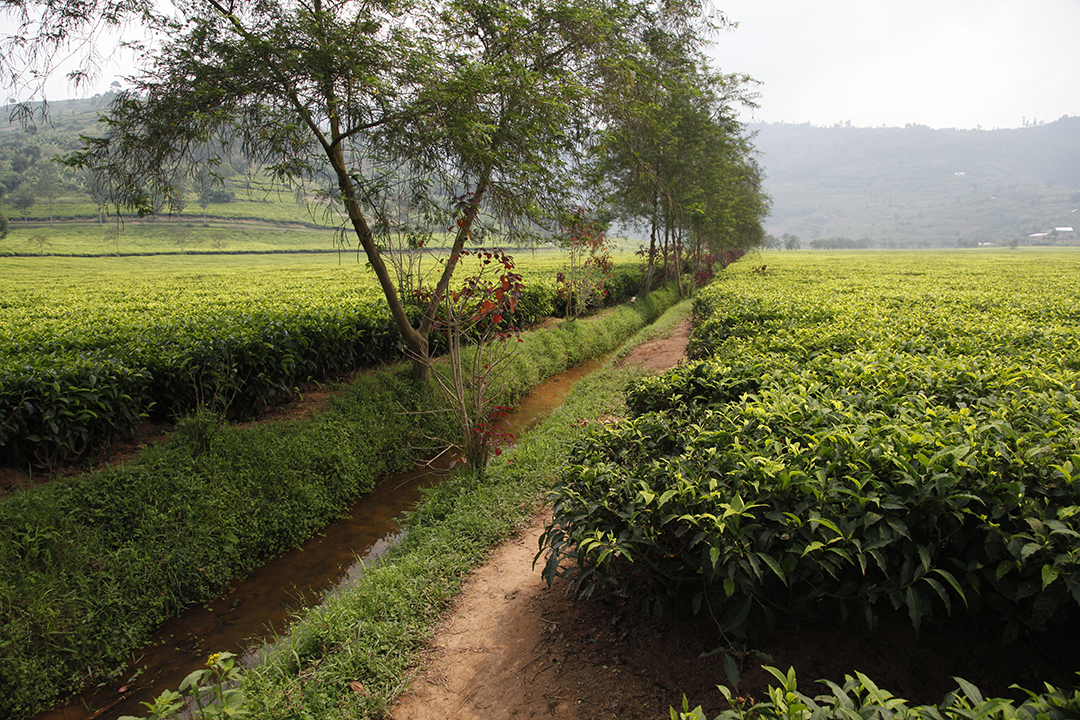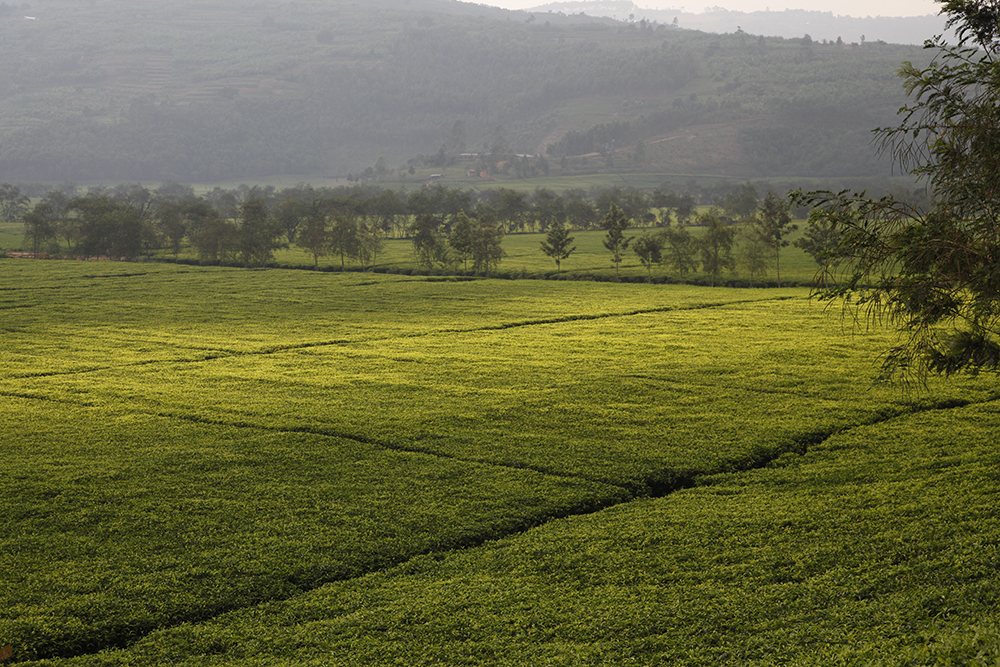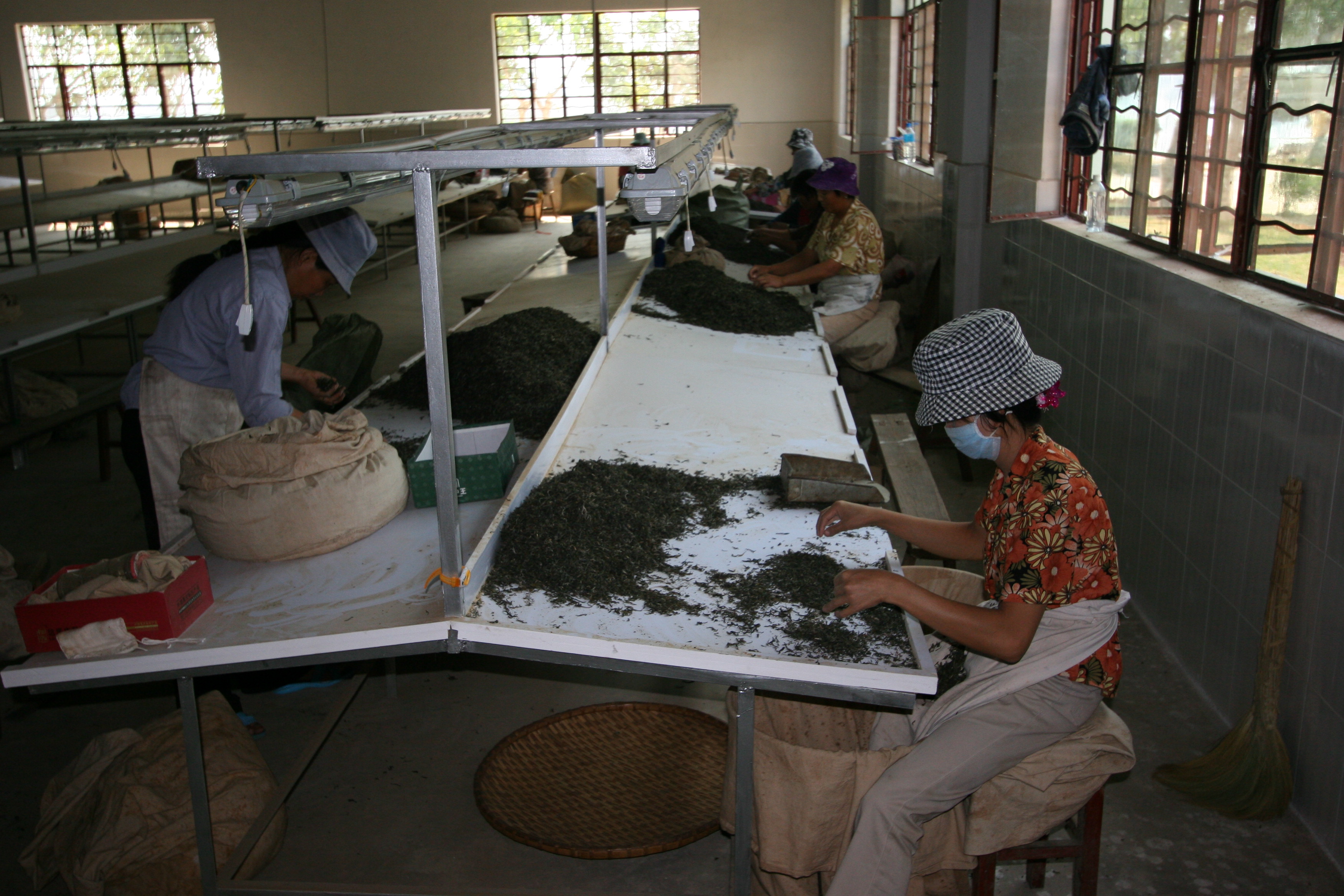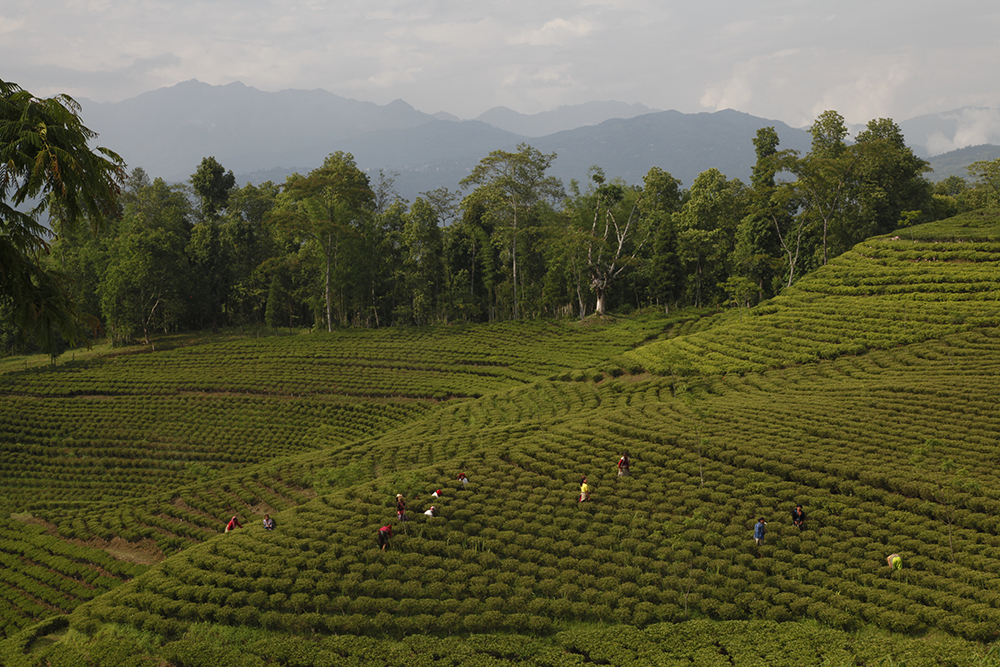Tea and rice have a lot in common. Firstly their shades of green, with the occasional touch of yellow, so delicate and varied, so intense. A feast for the eyes. I could spend my life photographing paddy fields. I often walk around them, carefully, placing one foot in front of the other along the low wall that surrounds them, in order to reach tea plantations that are even higher up the mountain, like here, in northern Vietnam. Some tea gardens have no road leading to them, so you set out on the sinuous path of the paddy fields. At least here it’s not steep, because rice grows on flat ground, either in fields or on terraces. Rice, unlike tea, needs stagnant water. Tea needs plenty of water too, but the water must be free-flowing, not sitting around its roots. That’s why tea likes slopes, while rice likes flat land. Flat versus slope, valley versus mountain, stagnant water versus flowing water; tea and rice are like two brothers who are completely opposite yet inseparable. They’re always together. They have another important human characteristic: of all agricultural products, these two crops employ the greatest number of people in the world. (To be continued.)
From plant to cup
Walking for hours
I’m back from Vietnam, and would like to share some photos of my trip with you. I set out from Hanoi to the region bordering China, where there are old tea plants growing wild; the leaves will be picked to make dark tea (what’s known as Pu Erh in China). After a six-hour drive to Hà Giang, followed by an overnight stay, I laced up my walking shoes for a three-hour trek in the mountains, through paddy fields at first, until I reached the famous tea plants, in the middle of the clouds… (to be continued).
Wild and beautiful
I can never get over the beauty of Malawi. Every week, as I prepare for my blog article, I go back over the different photos I like but haven’t yet used here. And it’s always the pictures of Malawi that capture my attention for a long time. The scenery is truly stunning. I know my photo isn’t that good, you can see the tea plants aren’t completely in focus, but the extraordinary light, all those shades of green and yellow, the beautiful blue sky fringed with white clouds, the high plateaus, that wildness extending to the horizon, those soft lines and other, more angular ones… We live in such an incredible world! If we remember to open our eyes and look, of course. And if we aren’t set on destroying it.
A very simple tea
Many types of tea are produced using a specific method or cultivar, or on a defined terroir. While most of these teas are made on modestly sized smallholdings, they are sometimes processed on larger premises with bigger facilities, and even in factories that make tea on an industrial scale. The key difference with teas processed traditionally as opposed to industrially manufactured teas is the artisanal quality of the former; this involves skilled work done by hand, and the process is judged through the feel, appearance and smell of the leaves at every stage.
Very rigorous work
Wherever it comes from, a premium tea involves rigorous work. This starts with the harvest, which must be done meticulously, and of course continues throughout each stage in the processing. Here, in Anhui (China), they are harvesting Huang Shan Mao Feng – “Downy Tips of the Yellow Mountains”. We can see the care being taken with the plucking as well as when transporting the leaves, which are shaded from the sun but still have air circulating through them. The baskets are small to prevent any compression of the precious shoots
Altitude, a useful ally
In Kenya, some plantations lie at almost 2,000 metres. At this altitude, insects and fungi that can attack tea plants are particularly rare, due to the low temperatures. So in these conditions, it’s easier to grow teas organically. However, to be certified “organic”, as well as not using prohibited pesticides and fungicides, the soil must be enriched naturally – with compost, for example.
Irrigation and drainage on flat land
Tea plants don’t like to stand in water. When tea is grown on flat land, like here in Rwanda, it’s important to dig out ditches so that the rainwater runs away and doesn’t linger around the camellia’s roots. What’s clever here is that the drainage is designed not only to allow water to run off, but also to irrigate the crops during dry spells. For the system to operate, you need to be near a reservoir, or a river, like here, so the water can be diverted into the channels. The frogs love it, judging by the racket they make, and a whole ecosystem thrives in these damp conditions, including colourful kingfishers, which I’ve startled into flight a few times.
Rwanda: magnificent landscapes, unusual plantations
This year, I’ve been incredibly lucky to visit some beautiful tea plantations, like the ones I went to in Kenya and Rwanda. I’ve seen a lot of tea fields in my life, yet I still discover breathtaking landscapes that resemble nowhere else. For example here, in Rwanda, tea grows not on hillsides, as is often the case, but at the bottom of the valley. The valley in question may lie at an altitude of 2,000 metres, but even so, it’s flat. And it’s still hot enough here for dense vegetation to surround the tea plants. In this “Land of a Thousand Hills” you’ll find incredible scenery, but also some remarkable and little-known teas. If you want to taste the tea that grows here, and feel connected to this beautiful place, it is called “Rwanda Silver Mist“, a powerful tea with fairly fruity, spicy, honey notes. It is a delicious discovery, a door that opens onto a very beautiful corner of our planet.
Meticulous work and high standards
It takes a lot of manual work to produce a high-quality tea, except in Japan, where they have designed incredibly sophisticated machines.
Tea leaves are sorted one by one, like here, in China. This is done for any tea worthy of the name; in other words, whole-leaf, good quality tea. This leaf-by-leaf sorting eliminates tiny pieces of stem, as well as any coarser leaves. It is also an opportunity to remove the occasional insect: tea plantations are living environments, and the presence of weeds and insects can be a sign of good farming practice.
Spring follows spring
After Darjeeling, we turn our attention to Nepal, China and Japan, to enjoy their new spring teas. In Japan, we return to the farmers we know, and we also enjoy discovering teas from others. In China, we are guided by the traditional appellations, which are attached to a particular village. In Nepal, we know which plantations are capable of producing the best teas at particular times of year. There is sometimes an added difficulty though, like here at Kuwapani. The planter, who was an employee rather than the owner of the plantation, has left. What will the results be like under his successor? We’ll know the answer in a few months’ time. Meanwhile, let’s enjoy tasting the new teas this spring has to offer!

